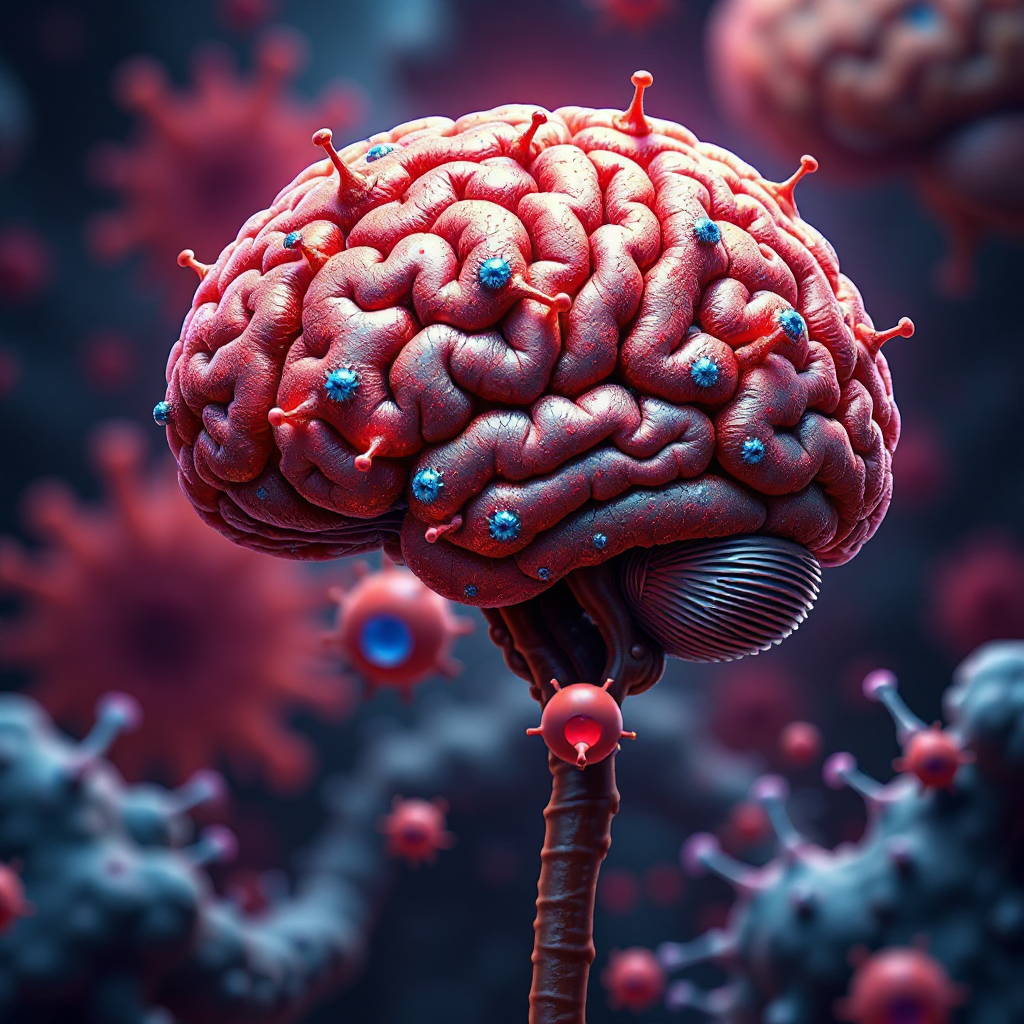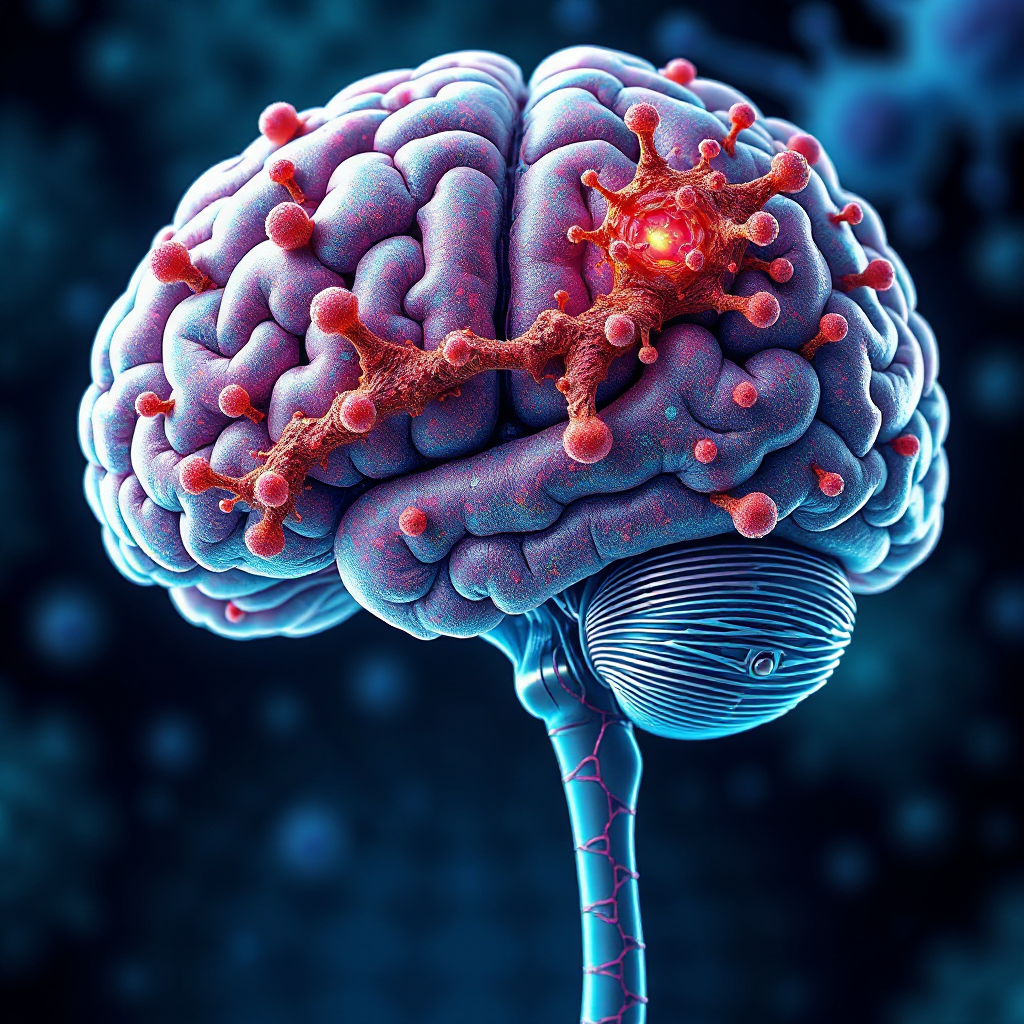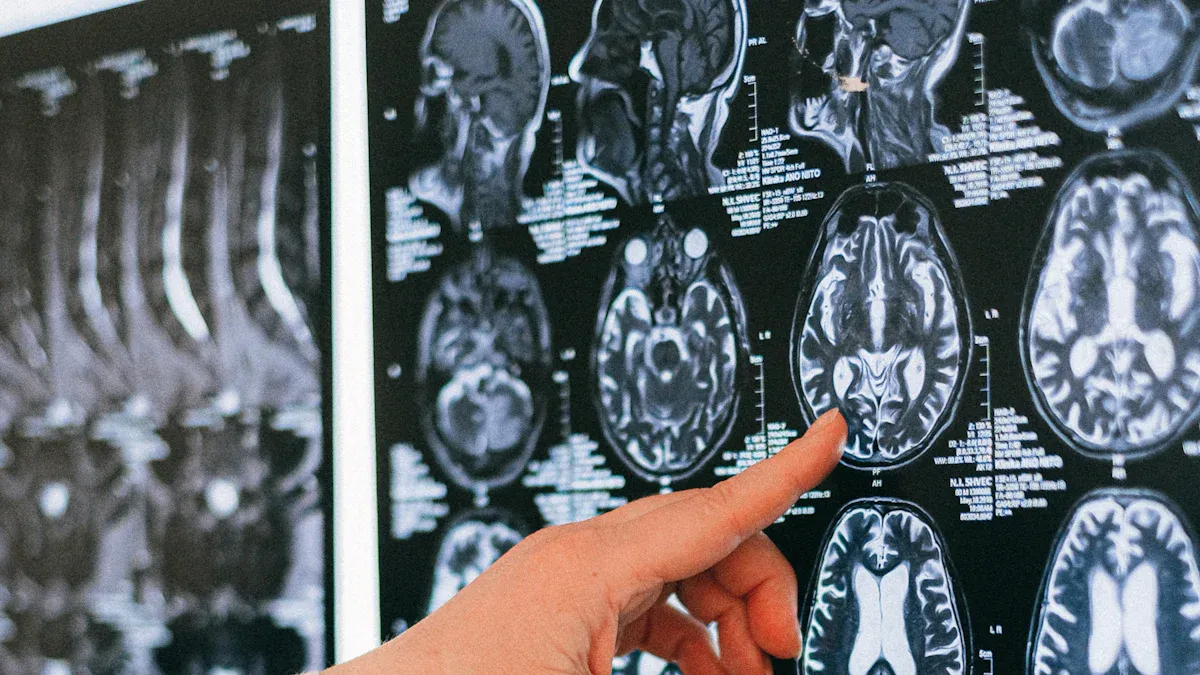What is Pineoblastoma and Its Symptoms

Pineoblastoma is a rare and aggressive brain tumor that develops in the pineal gland, a small structure deep in your brain responsible for regulating sleep-wake cycles. This tumor accounts for less than 0.5% of all primary brain tumors but represents 15–25% of pineal tumors. Classified as a high-grade tumor, it grows quickly and can spread to other parts of your central nervous system. Early detection plays a critical role in improving outcomes. If you notice unusual neurological symptoms, consult a healthcare professional promptly.
Key Takeaways
Pineoblastoma is a rare brain tumor that mostly affects kids and young adults. Finding it early helps improve treatment success.
Common signs are bad headaches, feeling sick, blurry vision, and trouble moving well. Watch for these and see a doctor if they happen.
Some genetic issues, like Li-Fraumeni syndrome, can raise the chance of getting pineoblastoma. Knowing your family’s health history can help.
Treatment usually includes surgery, radiation, and chemotherapy. Doctors create a plan based on each person’s needs.
Support for feelings and body health is very important during treatment. Do things that make you happy and ask friends or family for help.
What is Pineoblastoma?

Overview of Pineoblastoma
The role of the pineal gland in the brain
The pineal gland is a small, pea-shaped structure located deep in the center of your brain. It plays a vital role in regulating your body's sleep-wake cycle by producing a hormone called melatonin. This gland helps maintain your internal clock, ensuring you feel awake during the day and sleepy at night. When a tumor like pineoblastoma develops in this gland, it disrupts its normal functions. This disruption often stems from genetic mutations that interfere with how cells grow and divide, leading to the formation of a cancerous mass.
Characteristics of pineoblastoma as a cancerous tumor
Pineoblastoma is a rare and aggressive tumor classified as a World Health Organization (WHO) grade IV malignancy. It is the least differentiated among pineal gland tumors, meaning its cells appear immature and lack normal structure. Below is a table summarizing its defining characteristics:
Characteristic | Description |
|---|---|
Classification | Rare, malignant pineal parenchymal tumor, WHO grade IV |
Cell Appearance | Hypercellular with tightly packed small round blue cells |
Nuclei | Irregular hyperchromatic nuclei |
Mitotic Activity | Brisk mitotic activity |
Differentiation | Least differentiated among pineal gland tumors |
Affected Population | Primarily affects children and young adults |
Associated Conditions | Linked with hereditary conditions like retinoblastoma |
This tumor grows quickly and can spread to other parts of your central nervous system, making early diagnosis crucial.
Rarity and Demographics
Prevalence in children versus adults
Pineoblastoma is an uncommon tumor, but it is more frequently diagnosed in children and young adults. While it can occur at any age, it is rare in adults. This tumor accounts for a significant proportion of pineal gland tumors in younger individuals, highlighting its prevalence in this age group.
Why it is more common in individuals under 20
Pineoblastoma tends to affect individuals under 20 due to the unique biology of developing brains. The rapid growth and division of cells during childhood and adolescence may increase the likelihood of genetic mutations that lead to tumor formation. This explains why children and teenagers are more vulnerable to this condition compared to adults.
Symptoms of Pineoblastoma

Neurological Symptoms
Headaches, nausea, and vomiting
Pineoblastoma often causes pressure to build up inside your skull, leading to persistent headaches. These headaches may worsen in the morning or after lying down. You might also experience nausea and vomiting, which occur due to increased intracranial pressure. These symptoms can mimic other conditions, so paying attention to their frequency and severity is crucial.
Vision problems, including double vision
Vision changes are another common symptom. You may notice double vision, blurred vision, or difficulty focusing on objects. Pineoblastoma can also cause upward gaze palsy, a condition where you struggle to look upward. This occurs when the tumor compresses specific parts of your brain, such as the superior colliculi. If you experience these issues, consulting a healthcare provider is essential.
Physical and Motor Symptoms
Fatigue and weakness
Pineoblastoma can leave you feeling unusually tired or weak. This fatigue may not improve with rest and could interfere with your daily activities. Over time, you might notice a decline in your physical stamina, making it harder to keep up with tasks that once felt easy.
Difficulty with coordination or balance
You may also face challenges with coordination or balance. Walking might feel unsteady, or you could have trouble performing tasks that require fine motor skills. These symptoms often develop gradually but can worsen if the tumor grows or spreads.
Cognitive and Behavioral Changes
Memory issues and confusion
Pineoblastoma can affect your cognitive abilities. You might struggle with memory, finding it hard to recall recent events or retain new information. Confusion or difficulty concentrating can also occur, making it challenging to complete tasks or follow conversations.
Mood swings or personality changes
Behavioral changes are another potential symptom. You may notice mood swings, irritability, or shifts in your personality. These changes often result from the tumor's impact on brain regions that regulate emotions and behavior. Recognizing these signs early can help you seek timely medical attention.
Causes of Pineoblastoma
Genetic Factors
Hereditary conditions like Li-Fraumeni syndrome
Certain genetic conditions increase your risk of developing pineoblastoma. These include:
Li-Fraumeni syndrome, a rare hereditary disorder that predisposes you to various cancers.
DICER1 syndrome, which can lead to abnormal cell growth in the brain.
Retinoblastoma, a childhood eye cancer linked to mutations in the RB1 gene.
If you or a family member has one of these conditions, discussing your risks with a healthcare provider is essential.
Genetic mutations associated with tumor development
Specific genetic mutations play a significant role in pineoblastoma formation. These mutations disrupt normal cell growth, leading to tumor development. Key mutations include:
RB1 gene: Commonly associated with retinoblastoma and a known risk factor for pineoblastoma.
DICER1 gene: A mutation in this tumor-suppressing gene can result in uncontrolled cell division.
Other genetic changes, such as those in the DROSHA and PDE4DIP genes, have also been linked to pineoblastoma. These mutations affect processes like microRNA regulation and chromosomal stability, contributing to tumor growth.
Gene | Mutation Type | Description |
|---|---|---|
DROSHA | Recurrent homozygous deletion | Involved in microRNA processing, acting upstream of DICER1. |
PDE4DIP | Microduplication | Located in chromosomal region 1q21, associated with pineoblastoma expression. |
DICER1 | Germline mutation | A tumor protection gene linked to increased risk of pineoblastoma in patients with mutations. |
Environmental Factors
Potential link to ionizing radiation exposure
Exposure to ionizing radiation may increase your risk of developing pineoblastoma. This type of radiation can damage DNA, potentially triggering genetic mutations that lead to tumor formation. However, such cases are rare and typically linked to prior medical treatments involving radiation.
Lack of evidence for other environmental causes
Currently, no other environmental factors have been definitively linked to pineoblastoma. Researchers continue to investigate potential causes, but the rarity of this tumor makes it challenging to identify specific environmental triggers.
Unknown Causes
Challenges in pinpointing specific triggers
Pineoblastoma remains a rare and poorly understood condition. Its rarity makes it difficult for researchers to gather enough data for comprehensive studies. Additionally, the complexity of genetic mutations involved complicates efforts to identify clear causes.
Importance of ongoing research in understanding causes
Ongoing research is crucial for uncovering the underlying mechanisms of pineoblastoma. Scientists aim to better understand how genetic and environmental factors interact to cause this tumor. By advancing research, they hope to improve early detection and treatment options for those affected.
Treatment Options for Pineoblastoma
Surgery
Tumor removal procedures
Surgery is often the first step in treating pineoblastoma. Surgeons use specialized techniques to remove as much of the tumor as possible while minimizing damage to surrounding brain tissue. Common procedures include:
Infratentorial supracerebellar approach: This method accesses the tumor from the back of the head, reducing risks to critical brain structures.
Occipital transtentorial approach: This technique provides a broader view for larger tumors through an incision in the occipital region.
Minimally invasive techniques: These involve smaller incisions and advanced tools, leading to shorter recovery times.
Ventriculoperitoneal (VP) shunt: This device relieves pressure caused by cerebrospinal fluid (CSF) buildup.
Endoscopic third ventriculostomy (ETV): This procedure restores normal CSF drainage without requiring a permanent shunt.
Risks and benefits of surgical intervention
Surgical removal of pineoblastoma carries risks due to the tumor's deep location in the brain. Complete removal is challenging, and most surgeries achieve partial resection. This can relieve pressure and improve symptoms but may not eliminate the tumor entirely. Complications like hydrocephalus, caused by CSF blockage, are common. Procedures like VP shunts or ETVs help manage these issues. Despite the risks, surgery remains a critical step in reducing tumor size and preparing for additional treatments.
Radiation Therapy
Targeted radiation to destroy cancer cells
Radiation therapy plays a key role in targeting cancer cells left behind after surgery. It works by damaging the DNA of rapidly growing cells, preventing them from multiplying. Common approaches include:
External Beam Radiation: High-energy rays target the tumor site while sparing healthy tissue.
Proton Beam Therapy: This precise method is especially beneficial for children, as it minimizes damage to developing brain tissue.
Craniospinal Irradiation: Often used in patients over three years old, this method delivers a higher dose to the primary tumor site while treating the entire central nervous system.
Side effects and recovery considerations
Radiation therapy can cause side effects such as fatigue, nausea, and cognitive challenges. It may also affect endocrine functions, impacting growth, energy levels, and fertility. Regular checkups help monitor and manage these effects. Physicians may recommend medications or lifestyle adjustments, such as maintaining a balanced diet and regular sleep schedule, to improve recovery.
Chemotherapy
Common chemotherapy regimens for pineoblastoma
Chemotherapy uses powerful drugs to destroy cancer cells and is often combined with surgery and radiation. Common regimens include:
Chemotherapy Regimen | 5-Year OS Rate | Notes |
|---|---|---|
CCG-921 trial | Randomized chemotherapy with craniospinal irradiation | |
SIOP PNET 3 study | 71% | Alternating VCR, VP16, and carboplatin/cyclophosphamide with irradiation |
HIT2000 trial | 64% | Adjuvant chemotherapy with lomustine, cisplatin, and VCR |
COG 99701 study | 81% | Concomitant use of VCR and carboplatin during irradiation |
Drugs like Cisplatin, Cyclophosphamide, and Etoposide are commonly used. High-dose chemotherapy followed by stem cell transplants may be considered for aggressive cases.
Managing side effects of chemotherapy
Chemotherapy can cause side effects such as nausea, fatigue, and hair loss. Physicians often prescribe medications to manage these symptoms. Lifestyle changes, like eating a balanced diet and engaging in light physical activity, can also help. Emotional support through counseling or support groups may ease the psychological impact of treatment. Regular follow-ups ensure side effects are addressed promptly.
Supportive and Palliative Care
Symptom management and quality of life improvements
Supportive and palliative care play a vital role in helping you manage the symptoms of pineoblastoma while improving your overall quality of life. These approaches focus on relieving discomfort caused by headaches, nausea, and fatigue. By addressing these symptoms, you can concentrate on recovery and daily activities.
Engaging in activities that promote physical and mental well-being can make a significant difference. Gentle exercises, such as stretching or walking, help maintain your strength and mobility. Meditation and hobbies provide relaxation and a sense of normalcy during challenging times. Cognitive and physical therapy may also assist you in regaining skills and independence in daily tasks.
Emotional support from family, friends, and healthcare professionals is equally important. A strong support network helps you navigate the emotional and psychological challenges of a pineoblastoma diagnosis. This care not only improves your comfort but also enhances your overall well-being.
Role of physical therapy and psychological support
Physical therapy can help you rebuild strength and coordination affected by the tumor or its treatment. Therapists design personalized exercises to improve your balance and mobility, making it easier to perform everyday tasks. These sessions also reduce fatigue and boost your confidence in managing physical challenges.
Psychological support is just as essential. Counseling provides a safe space to process your emotions and develop coping strategies. Support groups connect you with others who share similar experiences, offering encouragement and understanding. These interactions remind you that you are not alone in your journey.
By combining physical therapy with psychological care, you can address both the physical and emotional aspects of your condition. This holistic approach ensures you receive the tools and support needed to face pineoblastoma with resilience and hope.
Pineoblastoma presents with symptoms like headaches, nausea, vision problems, and difficulty with balance or coordination. It can also cause changes in behavior, memory, or sleep patterns. While its exact cause remains unclear, genetic mutations and rare hereditary conditions play a significant role. Treatment often involves surgery, radiation therapy, and chemotherapy, tailored to each patient’s needs.
If you or a loved one experiences these symptoms, consulting a healthcare provider promptly is essential. Early diagnosis improves outcomes and provides clarity on treatment options.
Remember, maintaining hope is vital. Celebrate small victories, set achievable goals, and lean on your support network. Focusing on emotional and physical well-being can make this journey more manageable. You are not alone in this fight.
FAQ
What is the survival rate for pineoblastoma?
Survival rates depend on factors like age, tumor size, and treatment. For children, the 5-year survival rate ranges from 50% to 70%. Early diagnosis and aggressive treatment improve outcomes.
Can pineoblastoma be cured?
Treatment can lead to remission, but a complete cure depends on the tumor's response. Surgery, radiation, and chemotherapy often work together to manage the disease. Regular follow-ups are essential.
How is pineoblastoma diagnosed?
Doctors use imaging tests like MRI or CT scans to detect the tumor. A biopsy confirms the diagnosis by analyzing tissue samples. Lumbar punctures may check for cancer spread.
Is pineoblastoma hereditary?
Some cases link to genetic conditions like Li-Fraumeni syndrome or retinoblastoma. If you have a family history of these, genetic counseling can assess your risk.
What should you do if you suspect symptoms?
Consult a healthcare provider immediately. Early detection improves treatment success. Keep track of symptoms like headaches, vision changes, or balance issues and share them with your doctor.
See Also
Understanding Hepatoblastoma: Key Symptoms To Watch For
Cerebellar Astrocytoma: Recognizing Its Symptoms Effectively
Ependymoma Overview: Symptoms You Should Be Aware Of
Chondrosarcoma Insights: Identifying Common Symptoms Quickly
Choroid Plexus Carcinoma: Symptoms and Treatment Options Explained
